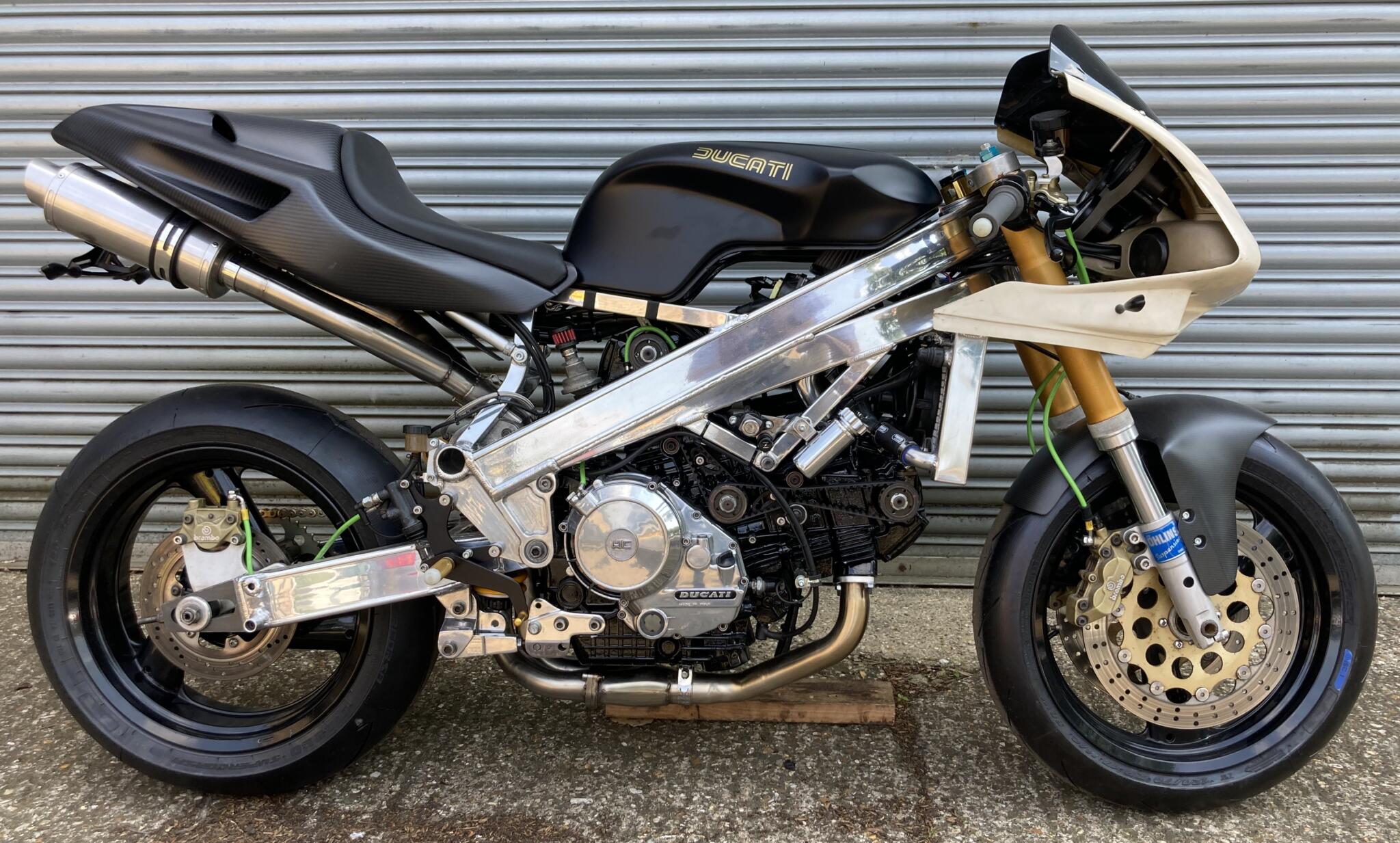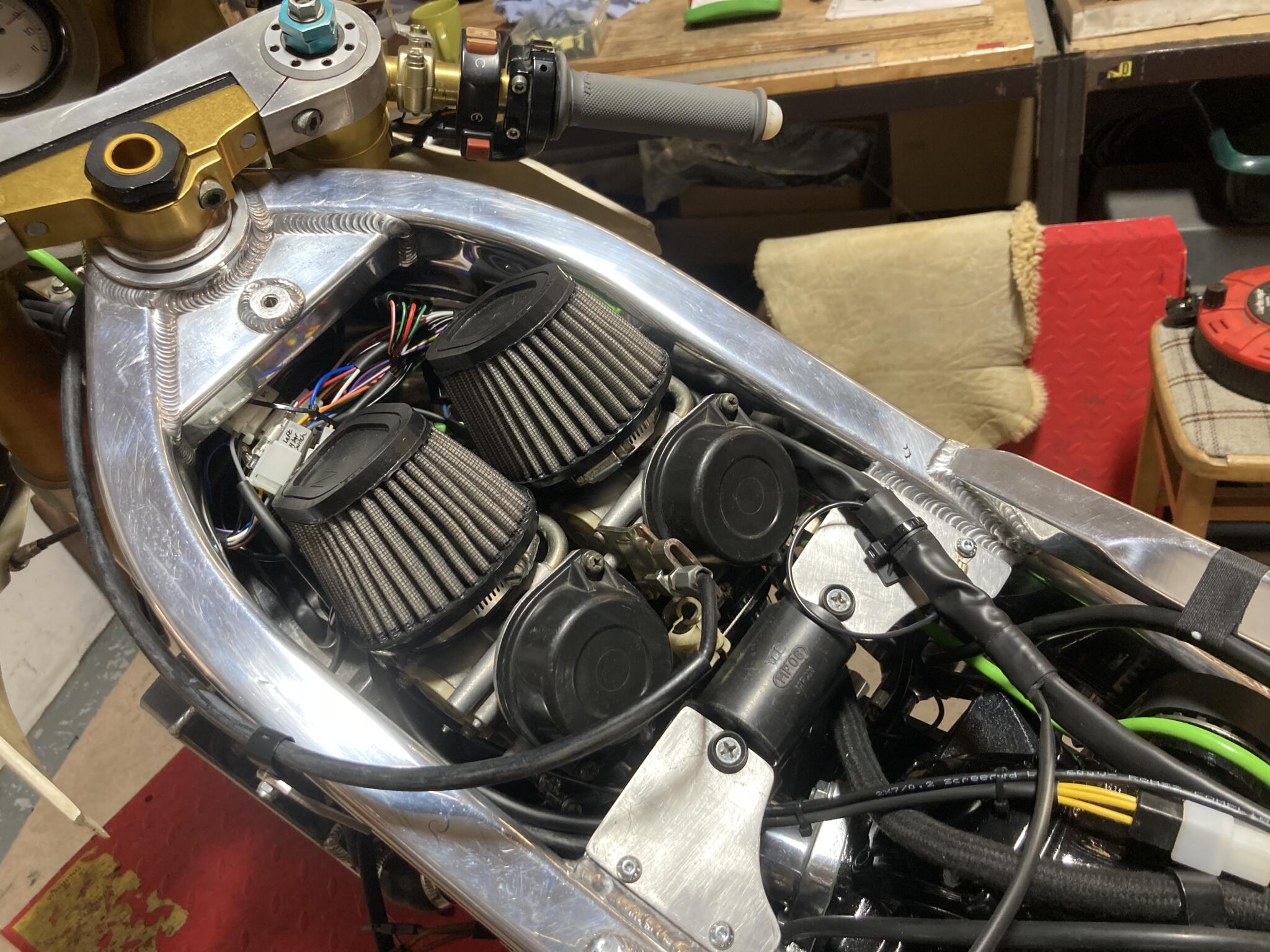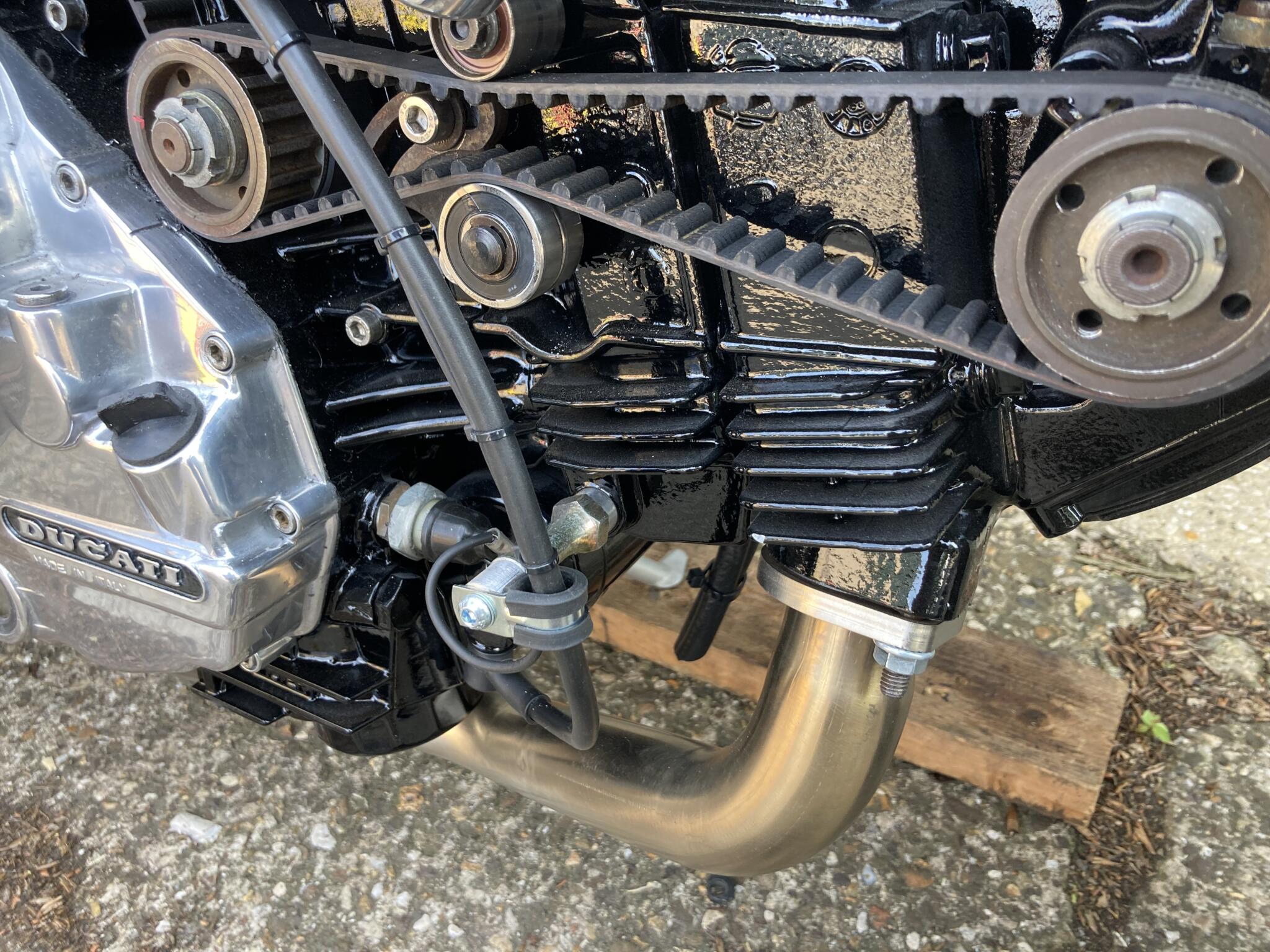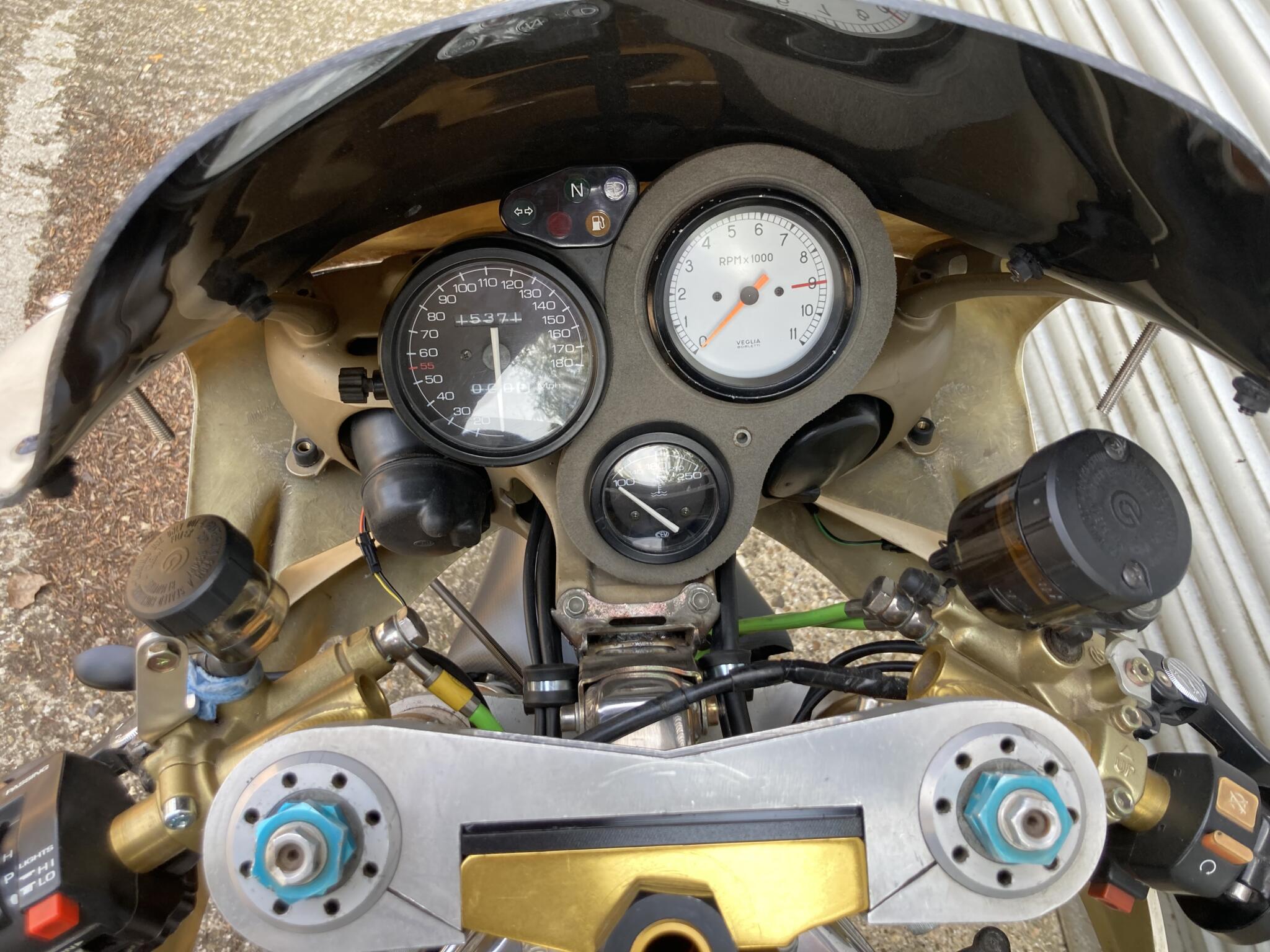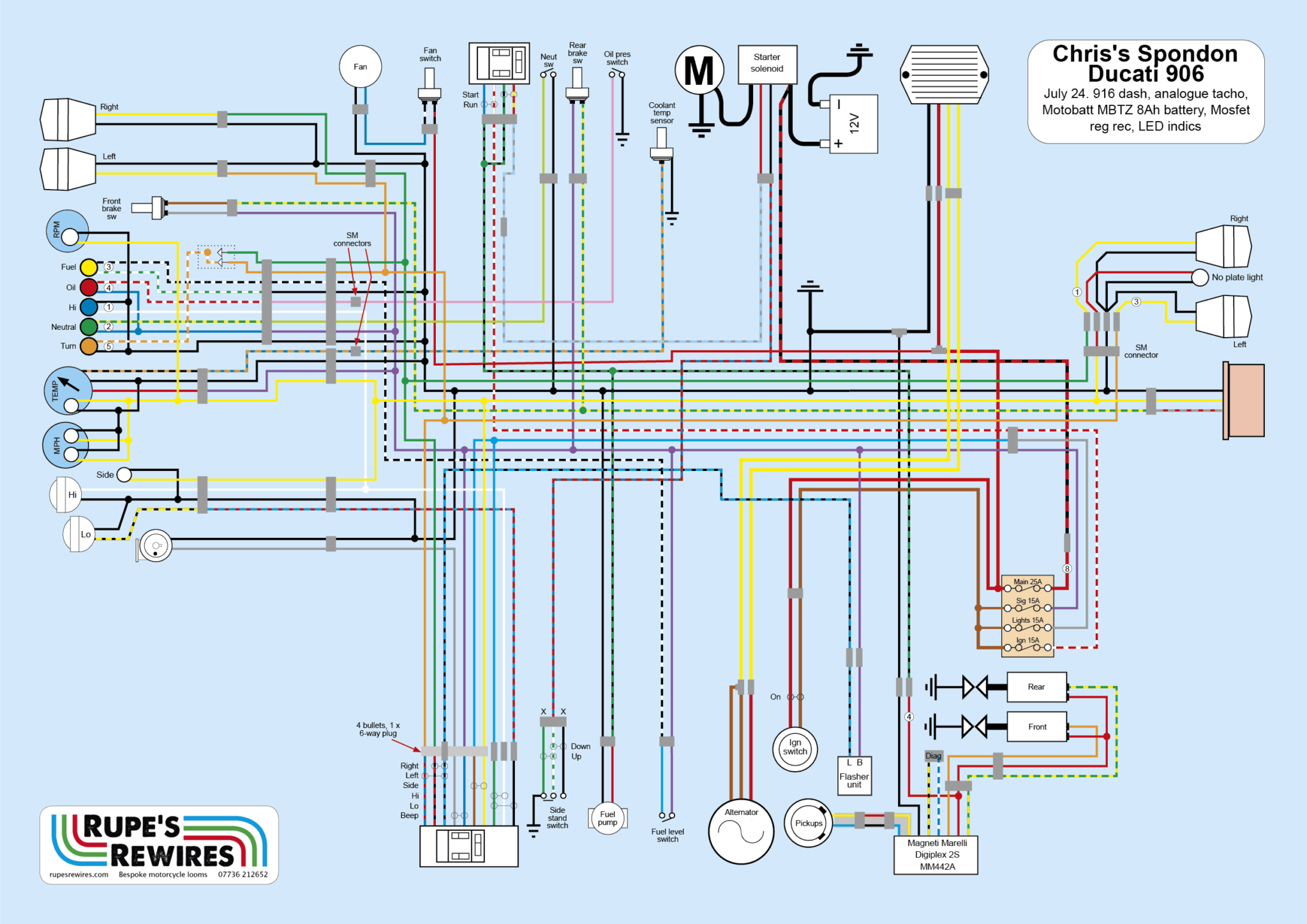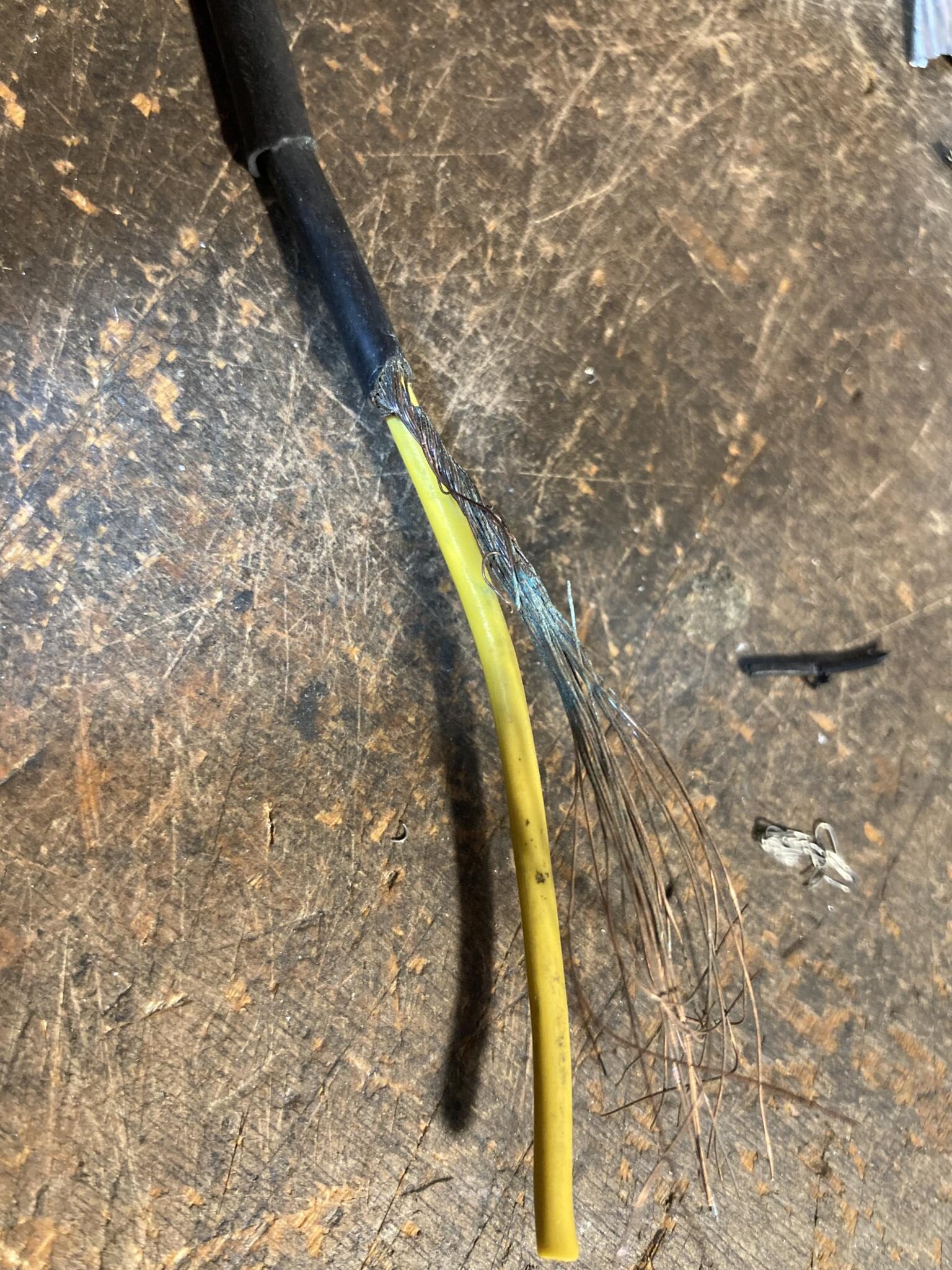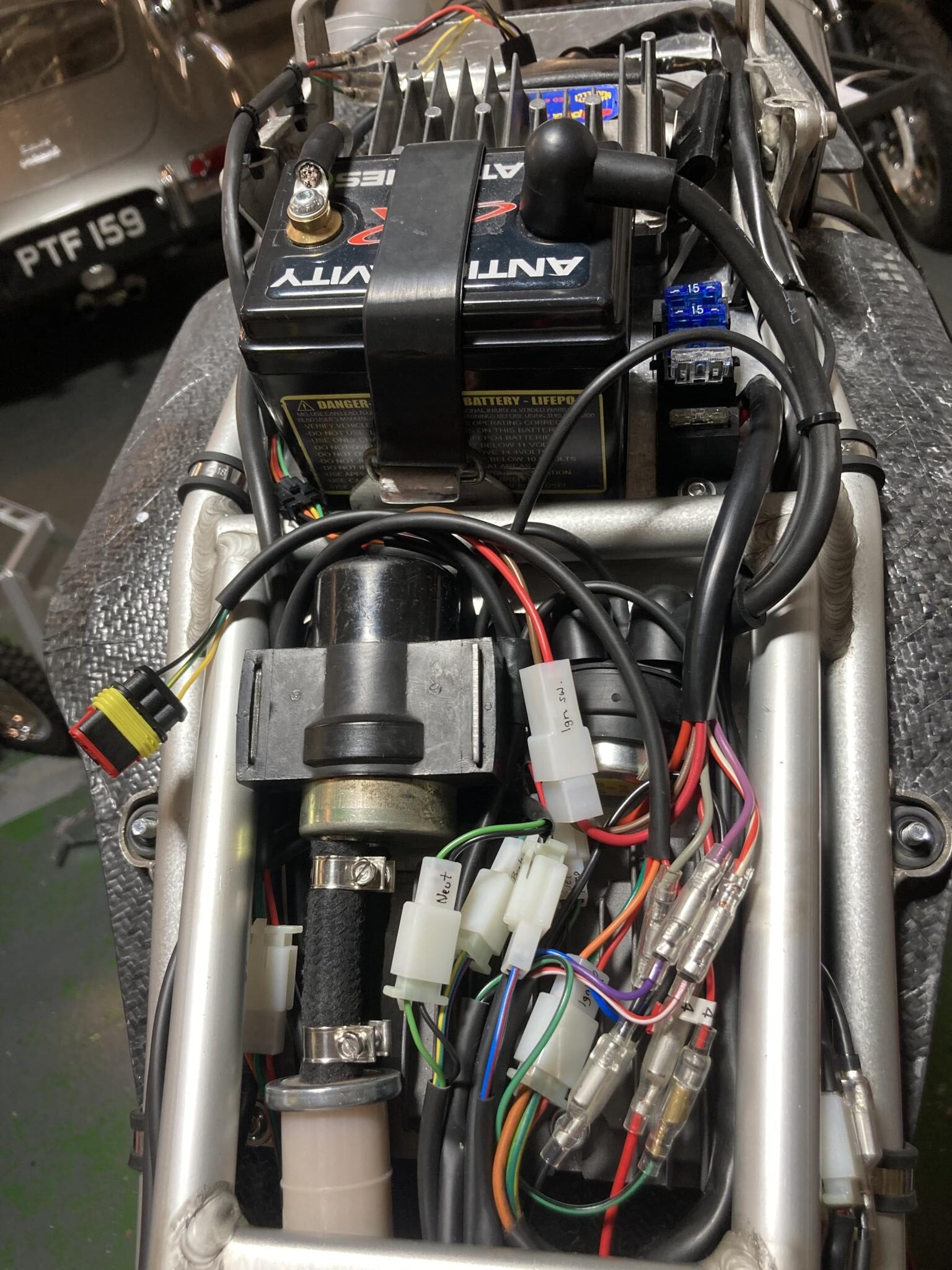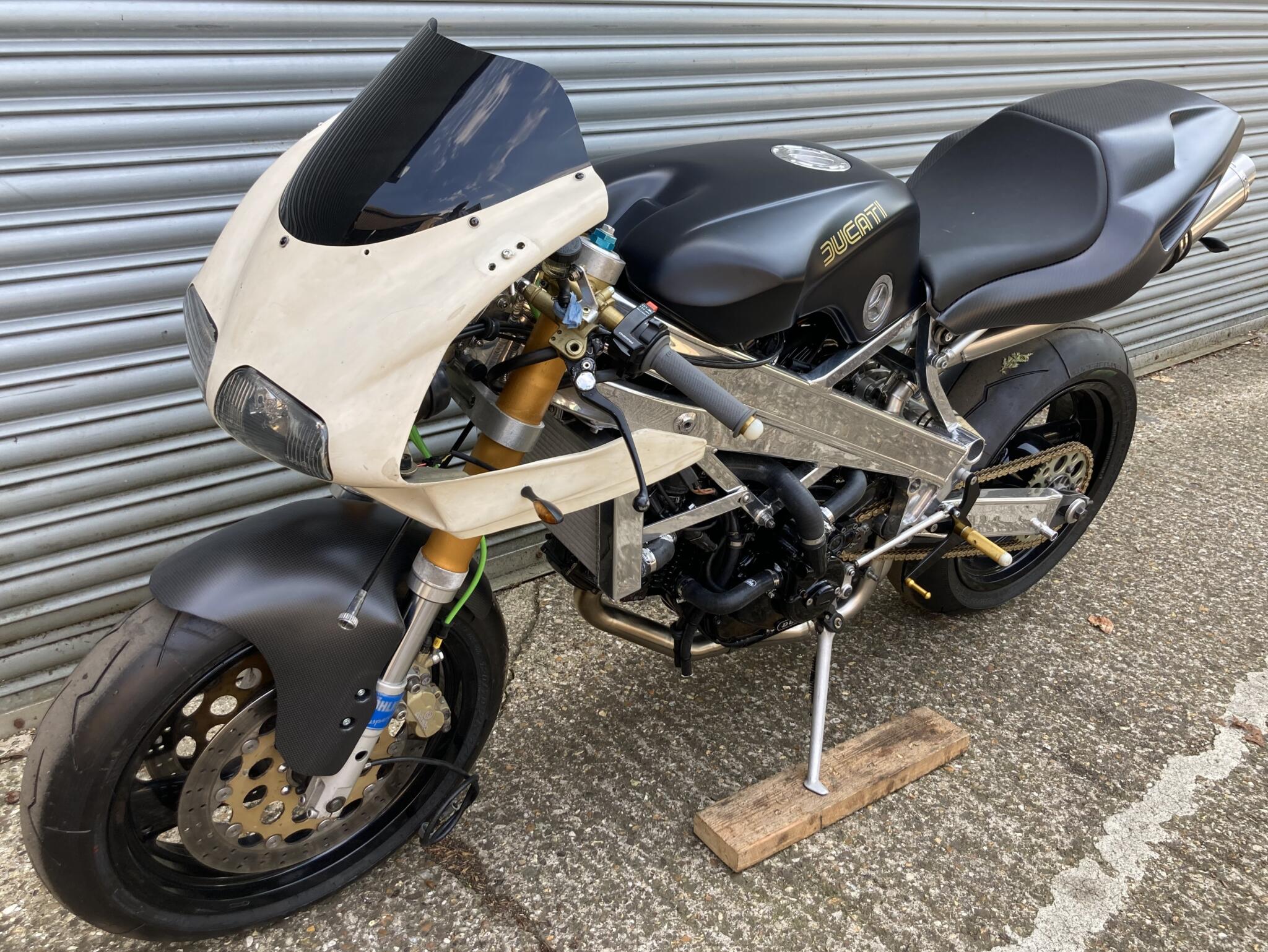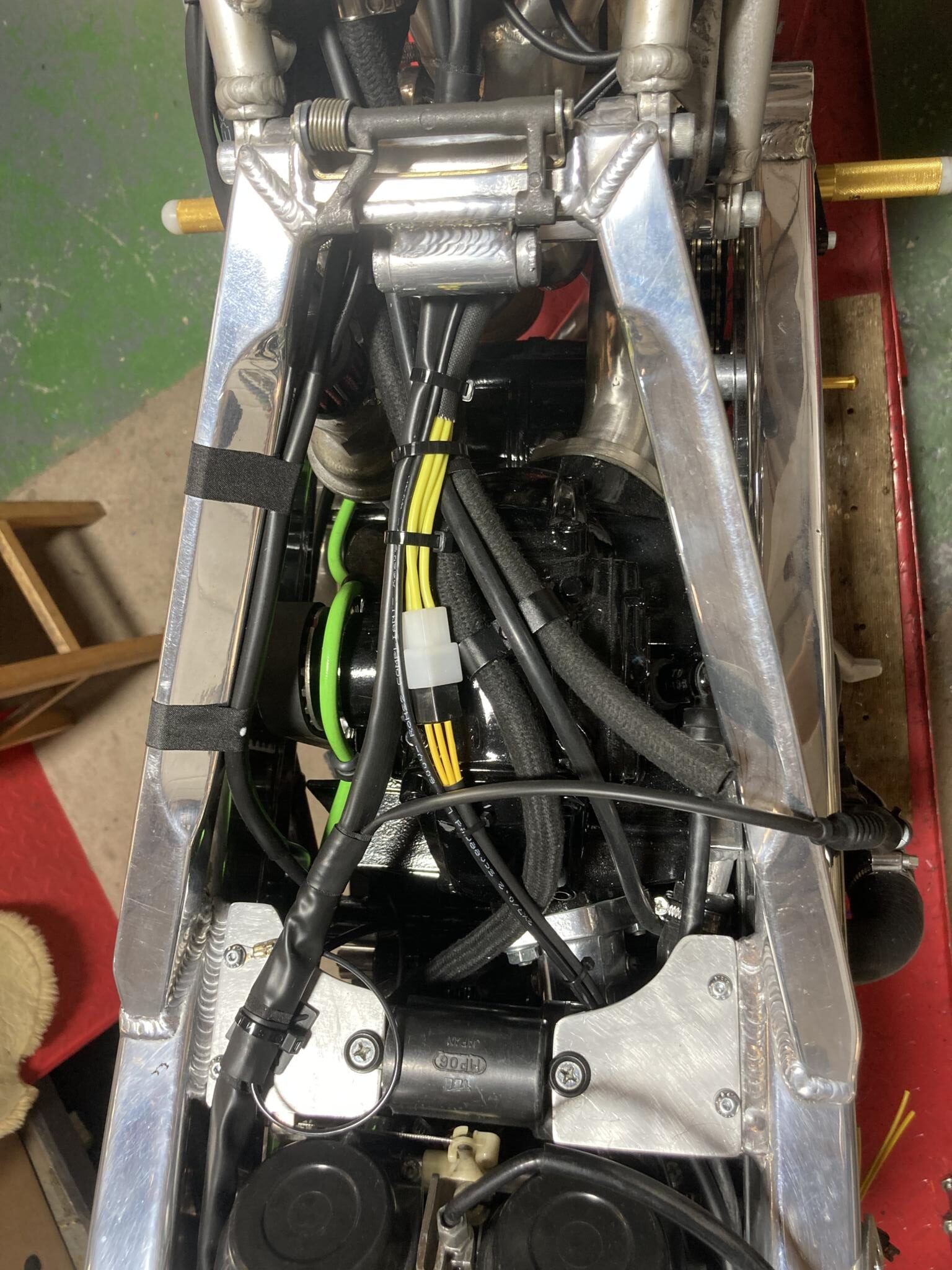
After much head scratching I ran the central part of the loom down the middle of the bike to keep the frame spars as free as possible of cable ties
Chris’s Spondon Ducati Paso 906
Chris has been building this extraordinary Ducati for about 20 years, and in all that time it had never run.
There’s a good reason for this. One does not simply walk into Mordor. And one does not simply screw a unique motorcycle together and press the starter button.
For younger readers, Spondon was a Derbyshire frame company which was a huge part of the specials culture of the 1980s and 90. Special frames for Ducatis are pretty rare, and this kit was sold via Steve Wynne (my old employer) in 1992, for 2,350. Chris acquired it shortly afterwards and started turning it into the device you see here.
The motor is from a 906 Paso – basically an air-cooled 900SS with water-cooled barrels. The tank is Cagiva Mito, and the fairing and seat Ducati 996. Chris also managed to find period Öhlins forks, some high quality wheels and a neat exhaust. The result is a bike that looks tight and together, in a unique way. Steve himself has another of these bikes and his looks quite different. You can see it here.
Designing and building an electrical system for this bike was one of those monster jobs that crop up every so often. Every scrap of the bike’s electrical equipment needed checking, repairing and repositioning so that nothing would intrude visually in the final appearance. Chris also wanted to make the nose cone and instruments removable without disturbing the main harness – a plan I agreed with.
The ignition is original Magneti Marelli, and although it works now I noticed it looks quite elderly. So I organised the connections to make it easy in the future to replace it with an Ignitech, should the need arise.
Chris also went for a conventional battery after my usual horror lecture about lithium ones (especially combined with single phase alternators, as here). The pics show an Antigravity lithium, but the finished bike went with a Motobatt which we worked out would just fit (with a bit of reshuffling of the ignition and fuse box).
It fired up pretty much instantly. Chris has a few jobs to sort out before the first ride. It’s a very rare bike, but he’s not going to let that stop him from thrashing the tits off it.
